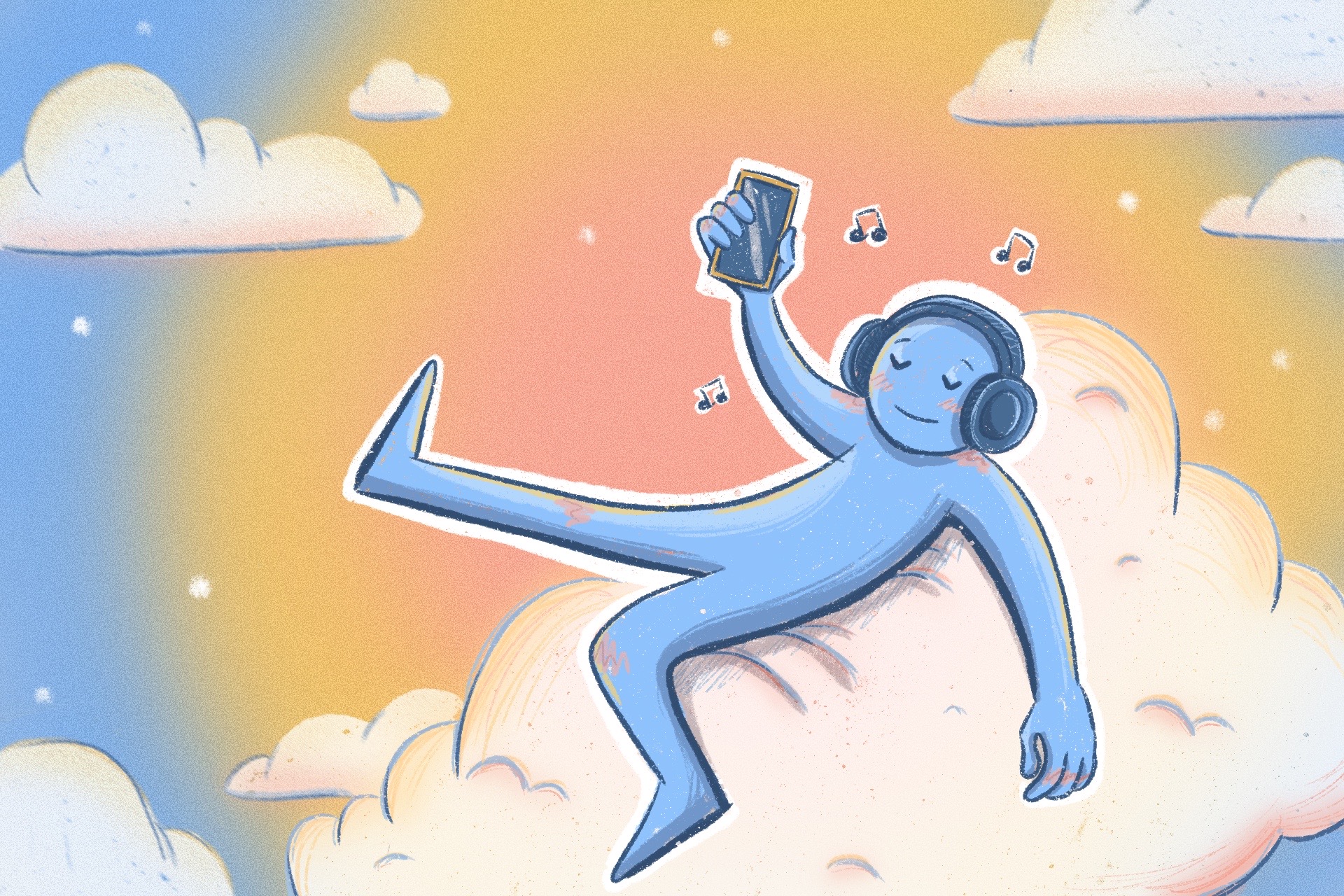Coming from a musically incompetent individual, Spotify’s Daylist is how I grew my music taste and populated my most recent playlists.
In the same way a 16-year-old gets their first car to drive to class, to traverse their hometown, and cruise to the mall over summer break, the car serves as the primary vehicle for a thriving playlist. Spotify, especially premium, is an app that most first-time drivers use and abuse, crafting specially curated playlists to enjoy their favorite artists even on the road.
Why make playlists on Spotify anyway?
Spotify, far more sophisticated than YouTube and much more personalized than classic FM radio, allows listeners to craft playlists of exquisite tastes and diverse libraries, including ranging from 12-hour playlists of Mitski, to Kero Kero Bonito, and even classic The Living Tombstone hits from middle school.
TYet, the flexibility and and capability of Spotify allows oneself to isolate and confine to conventional listening habits, listening sticking to classic comforts on repeat like Mitski’s “Washing Machine Heart” and Mother Mother’s “Wrecking Ball.” And sStarting from the one’s very first “Long Drive playlist,” the convenience of Spotify and access to an infinite library of absolute bangers can pigeon hole even the most musically curious of consumers.
Listening through sound-color synesthesia
Music is a manipulator of emotions, manifesting fantasies, creating stories and formulating new feelings. For someone with sound-color synesthesia, there are is also a colorful and even visual element to music. In other words, when listening to music, not only would one experience the sound itself, but they could even see the sound itself. Sounds, rather than simply physically moving through space, they become capable of traveling at the same speed as light.
Listening to music with sound-color synesthesia, songs are naturally associated with colors and their vibes. Like “Me and My Husband” brings about images of circular shapes of pink and blue, and the occasional zigs and zags of yellow, like that of an egg yolk; or the way Sabrina Carpenter’s “Read Your Mind” presents a very different vibe, with lyrics and sounds appearing in communication of bright blue and jet black, like line-work on a painting. An experience that appears so minor but plays such a pivotal part in one’s emotional well-being, especially in relation to music.
Even if the colors themselves are not sad, or angry, or even expressive of any sort of emotion, the sensual nature of color in response to music can quickly confine a person to especially comforting music, trying to remain within the parameters of pinks and purples or peaceful pastels. As unimportant as it may seem, it can be difficult to step aside. As much as the visions of color can be empowering and creative, it can be frightening to think of the sort of colors new songs can spawn and what sorts of feelings they can bring.
Discovering the Daylist
Moving from Los Angeles to Berkeley, leaving behind a 2020 Ford Fusion the primary vessel for music, was a difficult decision to make. But living in a walkable city, ample opportunity for a playlist to thrive still existed.
Without the responsibility of manning an entire vehicle, the comfort and capability to choose whatever song to listen to become an apparent curse. It was not until living with others that it did becaome clear that music wasn’t only necessary for travel,: but it was the background sound for existence. For breakfast, for conversation, for baking, for playing, for homework, for eating, for gaming. It was just a part of the silence.
Most nights, most late mornings, music became a part of everyday life. Whether it is Florence + The Machine, Maroon 5 or maybe even punk rock in the living room, something was always playing out loud.
And uncoincidentally, it was through the opportunities of the Daylist.
And though it is well-known that Spotify recommendations are incredibly repetitive, the Daylist creates a possible pathway to venture into new musical worlds. It utilizes the listener’s’ repetitive habits, new experimental leanings and general patterns of music throughout the day. It is able to formulate a playlist not only unique to each listener, but to each time of day for that listener.
There are some examples below.
Daylist Review 1: japanese indie majestic night
Each Daylist is specially curated not only for the listener, but also the time of day and the type of music one would usually listen to based on their listening habits. Spotify incorporated the popular repetition of the Chainsaw Man opening “KICK BACK” over and over, and specifically curated “japanese indie majestic night,” including other popular J-Pop songs, as well as “Shameless” by Camilla Cabello. Interestingly enough, it has a rather majestic, but more vigorous vibe. Particularly in “japanese indie majestic night,” the choice of songs are oozing with red, trickled with black, jagged shapes and a sort of edge, though they are so intensely different, they appeared to communicate through sound-color synesthesia so naturally.
Daylist Review 2: terror imagination wednesday afternoon
A Daylist like “terror imagination wednesday afternoon” takes into account a middle schooler’s listening habits on YouTube including “Discord” from The Living Tombstone and “Shinzo Wo Sasageyo!” from Linked Horizon, while also managing to mix in Olivia Rodrigo’s latest hit “Vampire” and some Rickey Montgomery. Despite the contexts, artists, and characteristics of all of these songs, they appear to all give similar colors, especially red and incredibly deep violets.
Daylist Review 3: liminal dreamcore friday night
Taking into consideration that a student would rather listen to music than study or stay inside on a rainy Friday night, “liminal dreamcore friday night” brings together ambient, and geeky music, from “Death by Glamour” to “Bubble Gum” by Clairo. Despite the sheer difference in subject, artist, and vibe of these songs, they both offer a similar vibe that does appear to fall under the same subject of the playlist title, with the choice of songs acting as contrasts to one another.
Expanding Premade Playlists
Since discovering the Daylist, other premade playlists in Spotify became way more worth exploring and listening to. The more a listener responds and interacts with Spotify’s natural algorithms, the more it is capable of learning one’s listening habits. Playlists have become increasingly accommodating to individual tastes, with an Ambient Mix including Minecraft music for reading at night, or “Test Drive” from “How to Train Your Dragon.” It is always a special treat when the opening to “Good Omens” comes on during a night of relaxing, simply because Spotify has become more adept at learning the listener’s habits. Studying has not only been able to introduce subjects in science and literature, but also new music in Japanese, Spanish, Megan Thee Stallion, and Laufey.
For someone who chronically struggles to find new music, the Daylist really allows one to break out of the comfort zone, creating a safe, small world where songs one loves and would love can intermix and mingle, allowing them to communicate via adjacent genres, artists, and vibes.
For those looking to expand their music horizons further than now, a great place to start is the Daylist, especially for the people who can listen to music doing just about anything. A Daylist for breakfast, a Daylist after class, a Daylist for late nights that should not be so late. Musical algorithms offer the chance to uplift one’s music tastes, expand them from a small seed and can allow one to become far more musically inclined and adept.

















